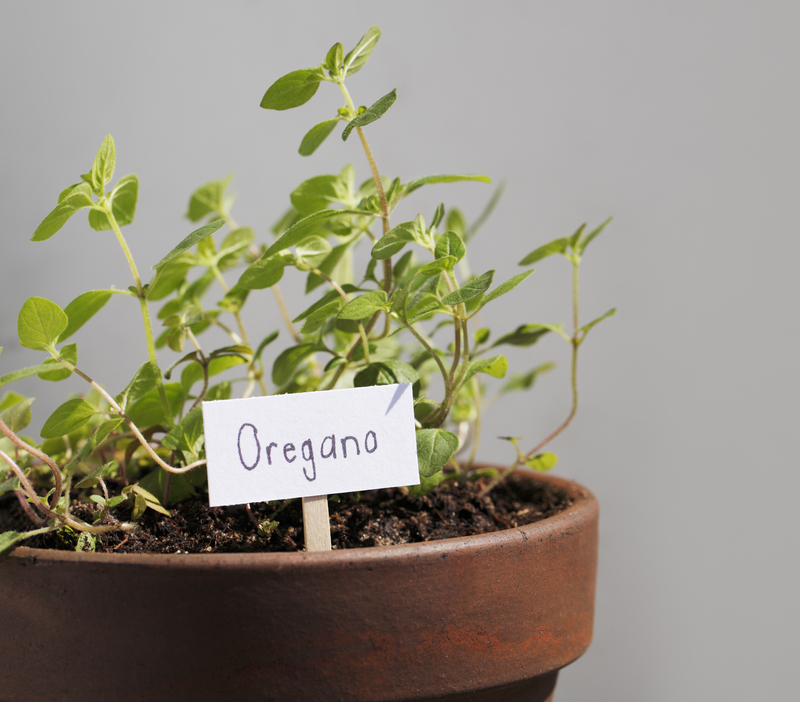Portable Planting Made Simple: 3 Essential Moveable Garden Tips
Portable planting has revolutionized the world of gardening. With city dwellers yearning for green spaces and homeowners seeking flexible garden arrangements, moveable gardening offers the perfect solution. Whether you're renting a property, own a compact balcony, or crave the freedom to shift your plants with changing sunlight, mastering the art of mobile gardening can be life-enhancing. In this comprehensive guide, we'll explore three essential tips that will make your portable gardening journey successful, enjoyable, and sustainable.
Why Embrace Moveable Gardening?
Moveable gardens empower you with flexibility. Beyond the trendy look and Instagram-worthy aesthetics, portable planters offer tangible benefits:
- Adaptability: Shift your plants for optimal sunlight and weather conditions.
- Convenience: Bring fragile or exotic species indoors during storms or temperature drops.
- Space Optimization: Make the most of patios, rooftops, balconies, and windowsills.
- Personalization: Design ever-changing layouts that suit your style and events.
Let's dive into the three essential portable gardening tips that can transform any outdoor or indoor space, helping you cultivate a thriving, flexible, and visually appealing garden oasis anywhere you call home.

1. Choose the Right Containers for Mobile Gardening
The foundation of a moveable garden is the container. Not all pots and planters are created equal. Selecting the best movable garden containers can make all the difference in plant health, portability, and overall aesthetics.
Consider Material, Size, and Functionality
- Lightweight Materials: Select containers made from resin, plastic, fiberglass, or thin metal. These materials are robust yet light, making it easy to rearrange your portable plants as needed.
- Handles or Wheels: Some modern planters come with built-in handles or casters, allowing you to move even large specimens with minimal effort. If mobility is key, opt for planters designed for easy relocation.
- Proper Drainage: Healthy roots need oxygen. Ensure containers have drainage holes to prevent waterlogging. You can place trays underneath when moving pots indoors.
- Size Matters: While smaller pots are easier to lift, larger ones provide a more stable root environment. Strike a balance based on your available space and the plants' growth habits.
- Weather Resistance: For outdoor portable gardens, pick containers that can withstand UV rays, frost, and rain. Resin and fiberglass are especially resilient.
Popular Types of Portable Garden Containers
- Window Boxes: Perfect for herbs, annuals, and trailing plants. They maximize vertical space and are easy to move and replant.
- Grow Bags: Fabric pots or grow bags are collapsible, breathable, and ultra-lightweight, making them a favorite for moveable container gardening.
- Hanging Baskets: Suspend these for a dramatic, cascading effect. Simply relocate them to protect from intense sun or storms.
- Rolling Planters: Look for pots with built-in wheels for effortless mobility, ideal for larger shrubs or mini-trees like citrus and olives.
2. Use Lightweight, Nutrient-Rich Potting Mixes
The soul of any portable garden is quite literally the soil. The right potting mix can be the difference between lush growth and struggling plants. When mobility is key, weight and nutrients both matter.
Avoid Heavy Soil
- No Garden Soil: Regular garden dirt is dense and compacts easily, making containers heavy and hindering root growth. It also harbors pests.
- Opt for Pre-mixed Potting Soils: Commercial mixes contain peat or coconut coir (for moisture retention), perlite, and vermiculite (for drainage and air space).
- DIY Blend: Make a light mix at home by combining equal parts compost, coconut coir, and vermiculite or perlite.
Boost Nutrition with Amendments
- Slow Release Fertilizer: Choose organic or synthetic pellets that feed plants for months without frequent application.
- Compost: Add a handful of homemade or store-bought compost to every container for ongoing nutrient support.
- Biochar or Worm Castings: These enhance microbial activity and improve water retention in relocatable planters.
Tip: Moveable containers dry out faster than garden beds. Mulch the top of your pots with bark, pebbles, or coir to retain moisture and keep roots cool.
Monitor pH and Drainage
- Test pH: Some plants require acidic (azaleas, blueberries) or alkaline (lavender, basil) soils. Adjust accordingly with lime or sulfur as needed.
- Adjust Drainage: If your moveable containers are draining too quickly or too slowly, tweak the ratio of perlite (for more drainage) or coir/compost (for more moisture).
3. Master the Art of Mobility for Healthy, Happy Plants
The true magic of portable plant gardening lies in regular movement, observation, and adaptation. Plants in moveable gardens flourish when you consider light, shelter, and design flexibility.
Observe, Rotate, and Relocate
- Chase the Sun (or Shade): Different plants have varying light needs. As seasons shift, so does the angle and duration of sunlight. Rotate sun-loving plants like tomatoes and peppers into bright areas and move shade-lovers under eaves, trees, or onto covered patios.
- Avoid Weather Extremes: During heatwaves, shift sensitive containers to cooler spots. As autumn approaches, bring tender plants indoors at night to safeguard from early frosts.
- Celebrate Versatility: Instantly refresh patios or yards by rearranging your portable planters for social gatherings, holidays, or simply a new look.
- Rotate for Growth: Plants grow towards the light--a process called phototropism. Rotate pots every week or two, which promotes evenly shaped foliage and prevents legginess.
Common Mobile Garden Arrangements
- Compact Vertical Gardens: Stackable or hanging systems increase yield in tight spaces. Ideal for herbs, strawberries, and mini-greens.
- Patio Clusters: Group containers with similar water and light needs. This microclimate supports healthy growth and makes watering easier.
- Mobile Raised Beds: Large troughs or bins with wheels are superb for root vegetables, salad greens, or even compact fruit trees.
Pro tip: If you move heavy containers frequently, invest in a sturdy plant dolly or rolling tray. These inexpensive, back-saving tools will make shifting your portable garden effortless.
Seasonal Moves and Maintenance
- Spring and Summer: Move sun-loving blooms and vegetables into prime positions. Watch for signs of heat stress and shift as needed.
- Autumn: Relocate perennials and tender annuals indoors or to protected areas before cold snaps arrive.
- Winter: Use insulated covers or wheel containers indoors. Most houseplants will thrive all year with supplemental lighting.
- Routine Checks: Inspect drainage holes for clogs, replenish mulches, and check for insects or disease when moving pots.
Popular Plants for Moveable Gardens
Not all plants are equally suited for container gardening on the go. Here are some favorites that excel in portable planters:
- Herbs: Basil, mint, cilantro, parsley, oregano, and chives thrive in small containers indoors or outdoors.
- Vegetables: Cherry tomatoes, salad greens, radishes, peppers, and bush beans can all flourish in lightweight pots or grow bags.
- Flowers: Marigolds, violas, pansies, nasturtiums, and dwarf zinnias provide continuous color in mobile planters.
- Compact Fruit: Strawberries, blueberries (in acidic potting mix), and dwarf citrus trees can be shifted for light and shelter as needed.
- Succulents and Cacti: Ideal for rooftop or windowsill gardens, these drought-resistant charmers are easy to move and combine.
Remember, the beauty of portable planting arrangements is the ability to experiment. Mix edibles and ornamentals, create themed displays--let your creativity flow!
Portable Garden Success Stories and Inspiration
Countless city gardeners and rural homeowners alike are discovering the joys of flexible gardening. Here are a few inspiring examples:
- Urban Apartments: Balcony dwellers use rolling racks and hanging baskets to grow bountiful herb gardens year-round.
- Rental Houses: Tenants assemble mobile raised beds or clusters of decorative pots that can be taken along to a new address--ensuring their plants move with them!
- Schoolyards and Community Centers: Educators use moveable gardens to teach kids about plant care, allowing the garden to be reconfigured for seasons, events, or repairs.
- Seasonal Businesses: Cafes and shops use planters with castors to decorate and rearrange patios instantly: one day an entryway, the next, a cozy outdoor seating area.
Common Portable Planting Pitfalls (and How to Avoid Them)
Even the most well-designed moveable gardens encounter occasional challenges. Stay ahead of the game with these troubleshooting tips:
- Overwatering: Portable containers drain faster, but still watch for water pooling. Always check soil moisture before watering.
- Wind Damage: Lightweight pots can topple in strong gusts. Cluster them close together for support, use heavier pots for tall plants, or anchor with bricks.
- Sun Scald: Rapid shifts in location can shock plants. When transitioning sun- or shade-loving species, do so gradually over several days.
- Root Bound Plants: Fast-growing species may need re-potting each season. Choose a slightly larger container, trim roots gently, and refresh the potting soil.

Ready to Start Your Portable Garden Journey?
With the right containers, lightweight potting mix, and a keen eye for mobility, portable gardens can thrive in any environment. The rewards are immense: lush vegetables, aromatic herbs, brilliant blooms, and the satisfaction of a garden tailored to your space and lifestyle. Remember, portable planting isn't just a trend--it's a sustainable, adaptable way to bring nature anywhere you go.
- Invest in quality containers suited for your preferred styles and plant choices.
- Use the lightest, richest soil combo you can create for healthy, transportable root systems.
- Move, adjust, and tweak your set-up for the best results as seasons and spaces change.
Portable gardening is easy to start, endlessly customizable, and perfect for beginners and experts alike. Whether you're outfitting a sunny windowsill or a sprawling patio, these three essential tips will help you design a moveable garden you'll love year after year.
Let Your Green Spaces Grow Wherever You Go!
Portable planting made simple is more than a mantra--it's a movement. Take advantage of the freedom to grow, adapt, and enjoy your favorite plants, no matter where you live. Get started today, and let your mobile garden journey inspire a greener life for years to come!